Ulsan Ilsan Beach (일산해수욕장 (울산))
12.7Km 2025-01-10
18 Haesuyokjang 10-gil, Dong-gu, Ulsan
+82-52-209-4470
Located 1 kilometer north of Baneojin, Ilsan Beach is a fine-grained sandy beach that is 600 meters in length, 40-60 meters in x_width, and 26,000 ㎡ in total area. The water is relatively shallow at 1-2 meters in depth and holds an average temperature of around 21.2 degrees Celsius during the summer months. Every July, there is a beach festival. Ilsan Beach offers various amenities and is surrounded by accommodation facilities, allowing for a comfortable and pleasant stay.
Nearby tourist attractions include Daewangam Park and Hwaam Boat Trail Mark Management Center, which has a lighthouse exhibition center and the highest lighthouse observatory in the area, giving visitors a wide-open view of Ulsanhang Harbor. Hyundai Heavy Industry is also located nearby.
Petroglyphs of Bangudae Terrace (울주 대곡리 반구대 암각화)
12.9Km 2025-03-28
285, Bangudaean-gil, Ulju-gun, Ulsan
+82-52-204-0322
* Please be advised that this is located in one of the areas affected by the recent wildfire (as of March 27, 2025).
** For real-time wildfire information and emergency upates, visit the Korea Forestfire Information website and the National Disaster and Safety Portal.
In Daegok-ri, Eonyang-eup sits Bangudae Terrace, a picturesque spot where a ridge of Yeongosan Mountain extends to and stands tall to form quite a spectacle featuring uniquely shaped rocks and cliffs. The name, Bangudae, comes from how it resembles a turtle lying prone on the ground. Petroglyphs are paintings drawn by people from the prehistoric times carved on rocks and depicting various scenes and events in their daily lives. Petroglyphs were often drawn on enormous rocks and other sacred locations of groups, and it is believed that people gathered around them to hold various rituals.
Petroglyphs of Bangudae Terrace in Daegok-ri, Ulju-gun are estimated to have been drawn over several periods since the New Stone Age so you can discover the differences in styles among various ages. Primary objects that were popularly carved include sea animals, land animals, humans and tools and, as our prehistoric ancestors actively engaged in hunting, the hope of abundance in game is believed to be the reason why these objects were frequently carved on rocks. Vividly expressing animals and hunting scenes and colorfully depicting outstanding traits of objects, these petroglyphs are a form of both hunting art and religious art, and they are considered as the greatest masterpieces from which we can take a peek at the life and customs of the prehistoric ages.
Bangeojin Port (방어진항)
13.2Km 2025-01-10
2 Seongkkeut-gil, Dong-gu, Ulsan
+82-52-209-3534
Bangeojin Port, designated as a national fishing port in 1971, is Ulsan's representative fishing port, with a large site for a fisheries cooperative's commission and an auction house. Various fish species, such as yellowtail, cutlassfish, Spanish mackerel, and anchovies, are caught. You can purchase fresh seafood from a nearby fish market or sashimi restaurant and enjoy it immediately.
The promenade along the breakwater reaches Seuldo Lighthouse, an excellent photo spot, and the sea road leading to Bangeojin Port, Daewangam Park, Ulgi Lighthouse, and Ilsan Beach also boasts romantic scenery. Recently, to revitalize tourism resources, murals and floor designs for the northern breakwater, parking lots, etc., were developed, and a village museum, the Bangeojin Museum, was opened. It serves as a resting place for Ulsan citizens and provides many attractions for tourists.
Daewangam Park (대왕암공원)
13.3Km 2025-01-10
95 Deungdae-ro, Dong-gu, Ulsan
+82-52-209-3738
Daewangam Park is a seaside park located on the east coast. The park has a walking trail that passes by a forest of pine, cherry blossom trees, magnolias, camellias, apricots, and forsythia. This park is located at the end of the southeasternmost point facing the East Sea, and has a lighthouse that serves as a marker for fishermen and sailors out on the sea. The park is also home to Daewangam Rock that looks like a dragon rising up into the sky. It is connected to the mainland with an iron bridge and has an observation tower.
Daewangam Park Suspension Bridge (대왕암공원 출렁다리)
13.3Km 2023-06-10
95 , Deungdae-ro, Dong-gu, Ulsan
Daewangam Park Suspension Bridge is the first suspension bridge in Ulsan and the first large-scale commercial tourism facility in Dong-gu. It was created with a length of 303 meters, connecting Hatgaebi and Surubang coastal trails in Daewangam Park. The bridge connects at once without intermediate supports, and currently, the span length is the longest among the suspension bridges in the country. Because it is a bridge over the sea, visitors can enjoy the exciting coastal scenery around Daewangam.
Petroglyphs of Cheonjeon-ri, Ulju (울주 천전리 각석)
13.5Km 2020-02-05
Cheonjeon-ri, Dudong-myeon, Ulju-gun, Ulsan
+82-52-277-0101
Petroglyphs refer to the paintings in which objects and symbols are carved, pecked, and colored on rocks, huge cliffs and cave walls.
Some of these rocky paintings are from as early as the late Paleolithic Era, but mostly they are seen from the New Stone Age, Neolithic Era and Bronze Age in which times these paintings were abundant.
The upper part of the rock shows various animals including deer pecked into the rock, and the lower part of the rock has writing and drawings of humans, and animals made by penciling.
As for the upper part, it is thought to have been made throughout the New Stone Age and Bronze Age to express their consciousness for abundance. In comparision, the painting of a cavalcade, a sailing boat, a dragon, a horse, and a deer and about 300 writings on the lower part of the rock were considered to be done by people during unified Silla, showing their belief of the area as a holy ground.
Seuldo Island (슬도)
13.7Km 2023-01-03
Bangeo-dong, Dong-gu, Ulsan
+82-52-277-0101
Seuldo Island is located off the coast of Ulsan City in the southeastern part of the Korean Peninsula.
Its name, Seuldo ("seul" meaning the Korean stringed instrument geomungo), was given as the sound of wind and waves hitting the rock island is said to mimic the sound of geomungo. In fact, the sound of waves hitting the island is so good that it is called seuldomyeongpa or the resounding of waves.
The island is also known as Siruseom ("siru" meaning an earthenare steamer) for its resemblance to the upside down siru, and Gomboseom ("gombo" meaning pockmarks) for its stones with holes in them.
On the island, there is an unmanned lighthouse dating back to the late 1950s. The main economic activity on the island is fishery.
Ulsan Petroglyph Museum (울산암각화박물관)
13.7Km 2021-02-22
254, Bangudaean-gil, Ulju-gun, Ulsan
+82-52-229-4797
Ulsan Petroglyph Museum was established on May 30, 2008 at the entrance to Petroglyphs of Bangudae Terrace (National Treasure No. 285) in Ulju-gun. The museum displays 311 exhibit materials and has an exhibition hall, a storage room, a research lab, and an audiovisual room.
The exhibition hall presents models of petroglyphs of Bangudae and petroglyphs of Cheonjeon-ri (National Treasure No. 147), an educational video introducing the petroglyphs, a children’s hall, and family activity facilities. Visitors can observe reproductions of famous petroglyphs at the outdoor exhibit.
Chisanseowon Confucian Academy (치산서원)
13.7Km 2020-02-05
7, Chisullyeong-gil, Dudong-myeon, Ulju-gun, Ulsan
+82-52-204-0324
Relics of Park Jesang is also referred to as Chisanseowon Confucian Academy.
Park Jesang, a descendent of Park Hyeokgeose, was severly tortured and then burned to death after rescuing two hostages taken by Japan, who were the brothers of King Nulji.
The nearby temple and Mangbuseok have a folk tale regarding the story. His wife and two daughters died waiting for him and then his wife is said to have turned into Mangbuseok (faithful wife stone) in the eastern Chisullyeong Mountain in Manhwa-ri, Dudong-myeon. According to the legend, her spirit became a bird, and flew away to hide behind Euneulam (Bird Hidden Rock).
After Park Jesang's couragous act, King Nulji gave him a loyal officers position as well as the role of godmother to his wife for her model behavior of wifely duty. Chisanseowon Confucian Academy keeps their ancestral tablets to honor royalty.
Jujeon Mongdol Beach (주전몽돌해변)
13.8Km 2023-01-03
Jujeon-dong, Dong-gu, Ulsan
+82-52-229-6174
Jujeon Mongdol Beach is one of 12 must visit attractions of Ulsan. Jujeon meaning red ground, for the ground has a red hue. The 1.5 kilometer-long beach is filled with black pebbles and has various oddly formed rocks.
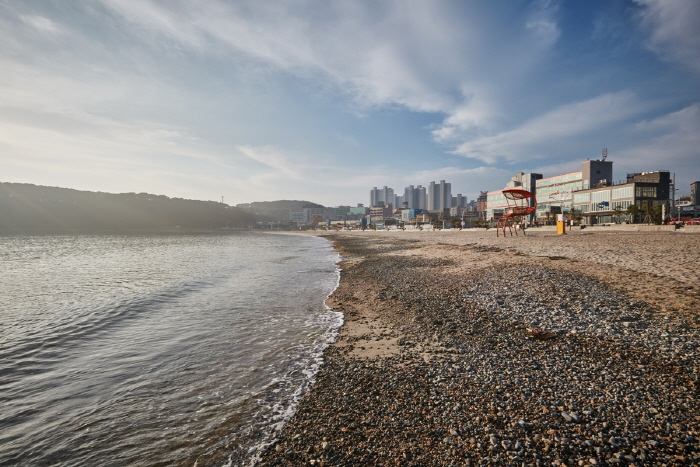
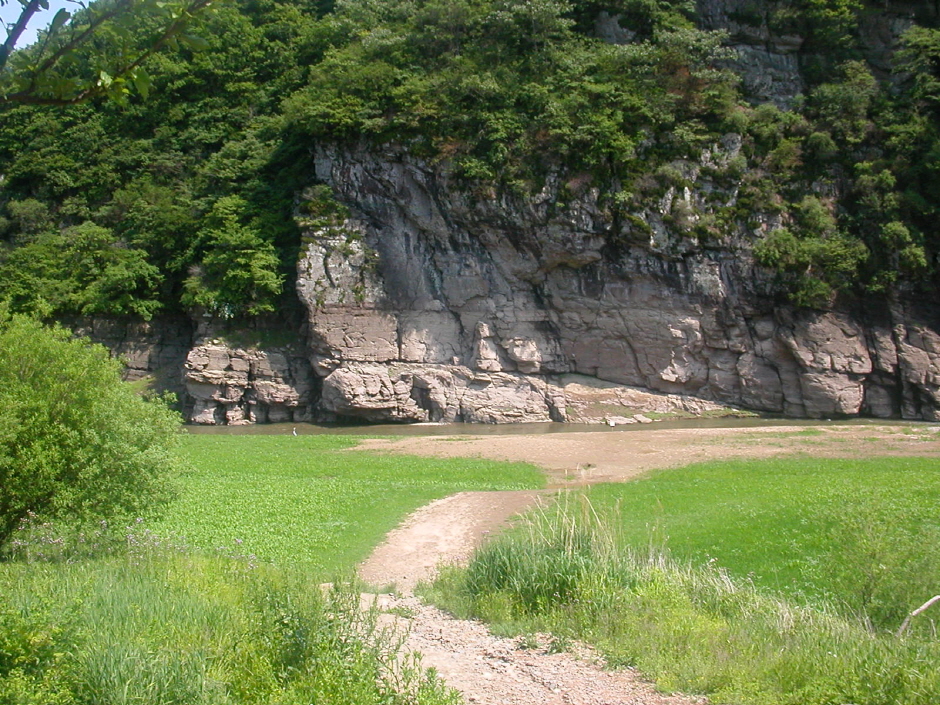
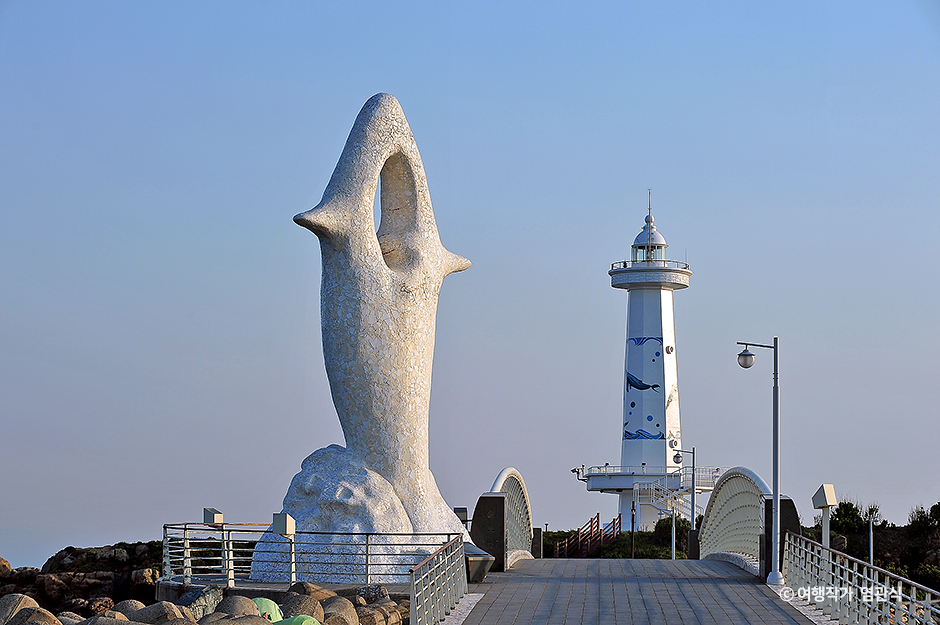
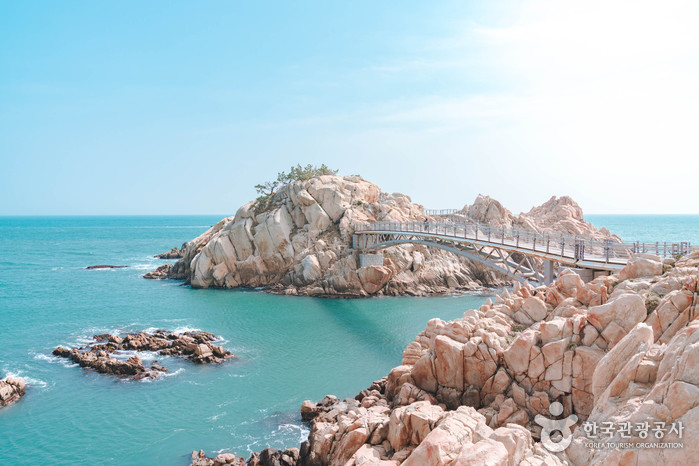

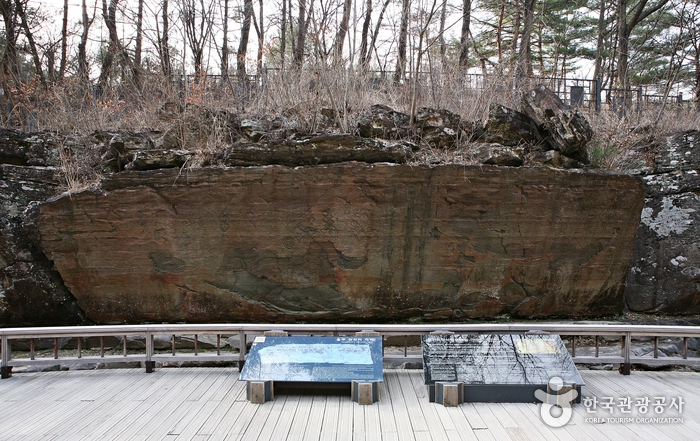
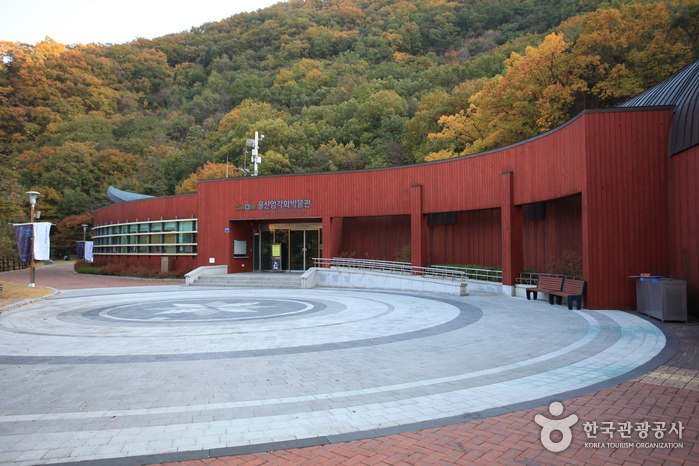
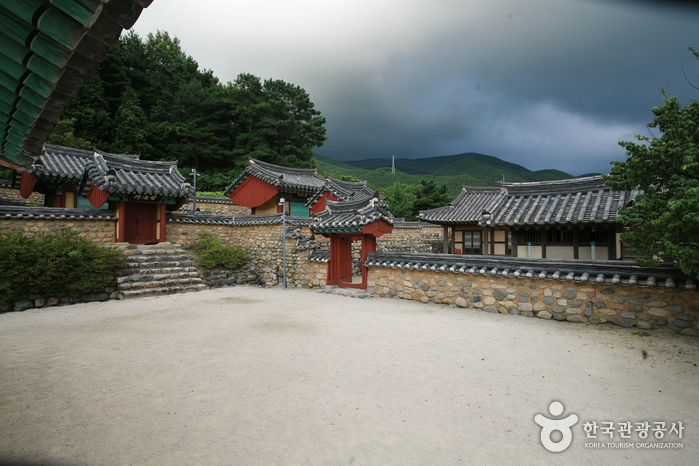
 English
English
 한국어
한국어 日本語
日本語 中文(简体)
中文(简体) Deutsch
Deutsch Français
Français Español
Español Русский
Русский